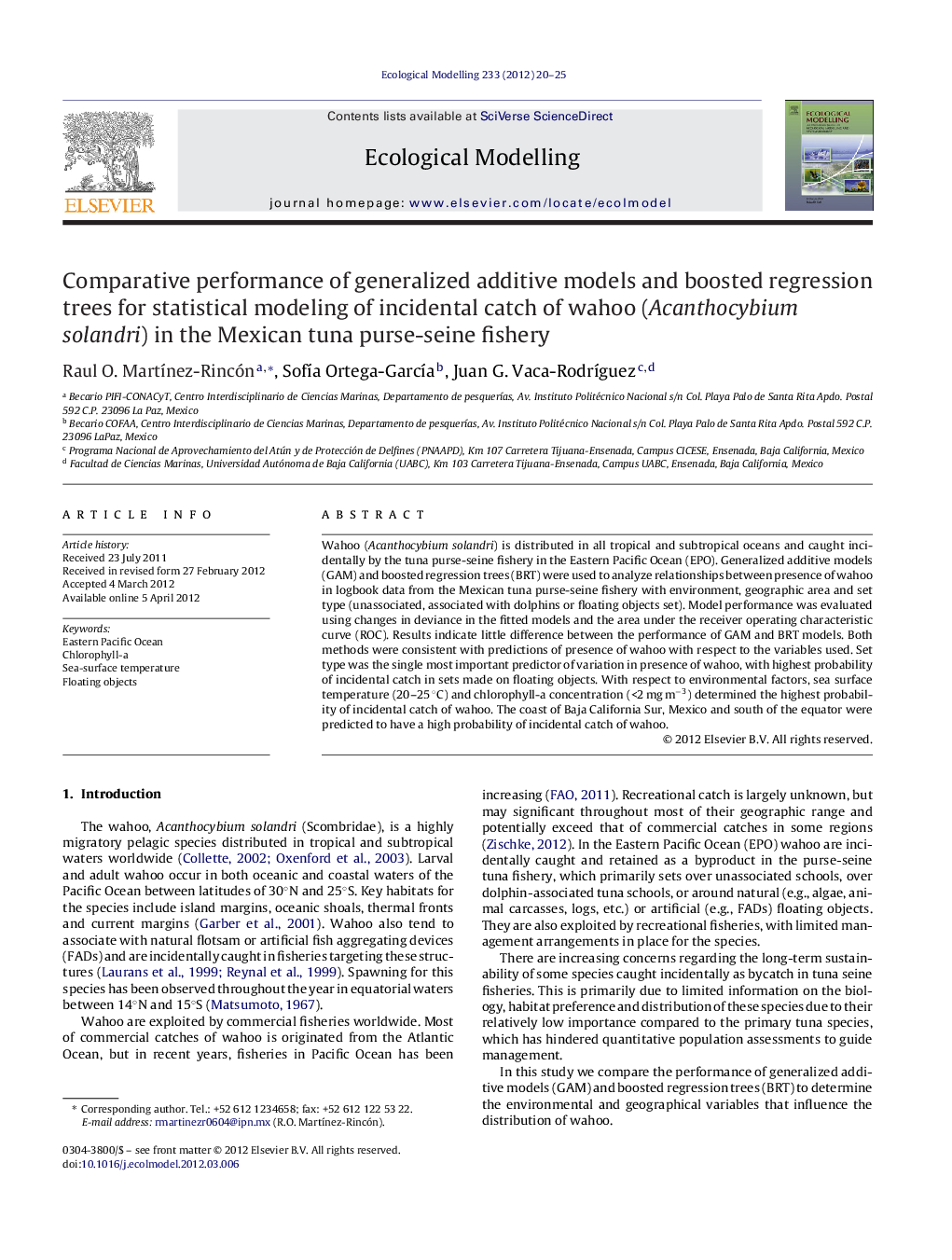| Article ID | Journal | Published Year | Pages | File Type |
|---|---|---|---|---|
| 4376477 | Ecological Modelling | 2012 | 6 Pages |
Wahoo (Acanthocybium solandri) is distributed in all tropical and subtropical oceans and caught incidentally by the tuna purse-seine fishery in the Eastern Pacific Ocean (EPO). Generalized additive models (GAM) and boosted regression trees (BRT) were used to analyze relationships between presence of wahoo in logbook data from the Mexican tuna purse-seine fishery with environment, geographic area and set type (unassociated, associated with dolphins or floating objects set). Model performance was evaluated using changes in deviance in the fitted models and the area under the receiver operating characteristic curve (ROC). Results indicate little difference between the performance of GAM and BRT models. Both methods were consistent with predictions of presence of wahoo with respect to the variables used. Set type was the single most important predictor of variation in presence of wahoo, with highest probability of incidental catch in sets made on floating objects. With respect to environmental factors, sea surface temperature (20–25 °C) and chlorophyll-a concentration (<2 mg m−3) determined the highest probability of incidental catch of wahoo. The coast of Baja California Sur, Mexico and south of the equator were predicted to have a high probability of incidental catch of wahoo.
► In this study we model incidental catch of wahoo in purse-seine fishery. ► Sets on floating object produce more incidental catches of wahoo. ► Low chlorophyll-a concentrations and SST between 20 and 25 °C were preferred conditions. ► The coast of Baja California Sur and south of the equator were important for specie.
